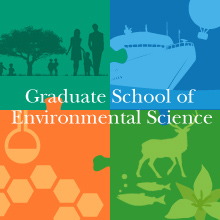[Press Release] Stream resource gradients drive consumption rates of supplemental prey in the adjacent riparian zone
2017-10-12Decades of research have shown that ecosystems are not “stand-alone” entities; instead, ecosystems are linked each other through cross-system movements of materials such as nutrients, detritus, and organisms, which are called spatial subsidies. Aquatic–terrestrial ecosystem linkage is one of the well-known linkage, but less is known about how much effect changes in an aquatic system have on the adjacent terrestrial ecosystem. A research group that includes Assoc. Prof. Junjiro N. Negishi and a Ph.D. student, Nozomi Watanabe (Division of Environmental Science Development) quantified how riverine productivity (donor system) mediates terrestrial food web interactions through spatial subsidies to simplified gravel bar communities. Their results indicated that higher algal biomass in aquatic systems led to increased supplies of emerging aquatic insects. The results also showed that the increased supplies were associated with greater densities of terrestrial consumers and enhanced consumption rates of supplemental in situ prey on gravel bars. This study highlights the potential of donor productivity to drive cascading biotic interactions across coupled ecosystems.
This research outcome is published in Ecosystems.
Please visit links below to view the press release (Japanese ver. only).
Research Press Release (PDF)













